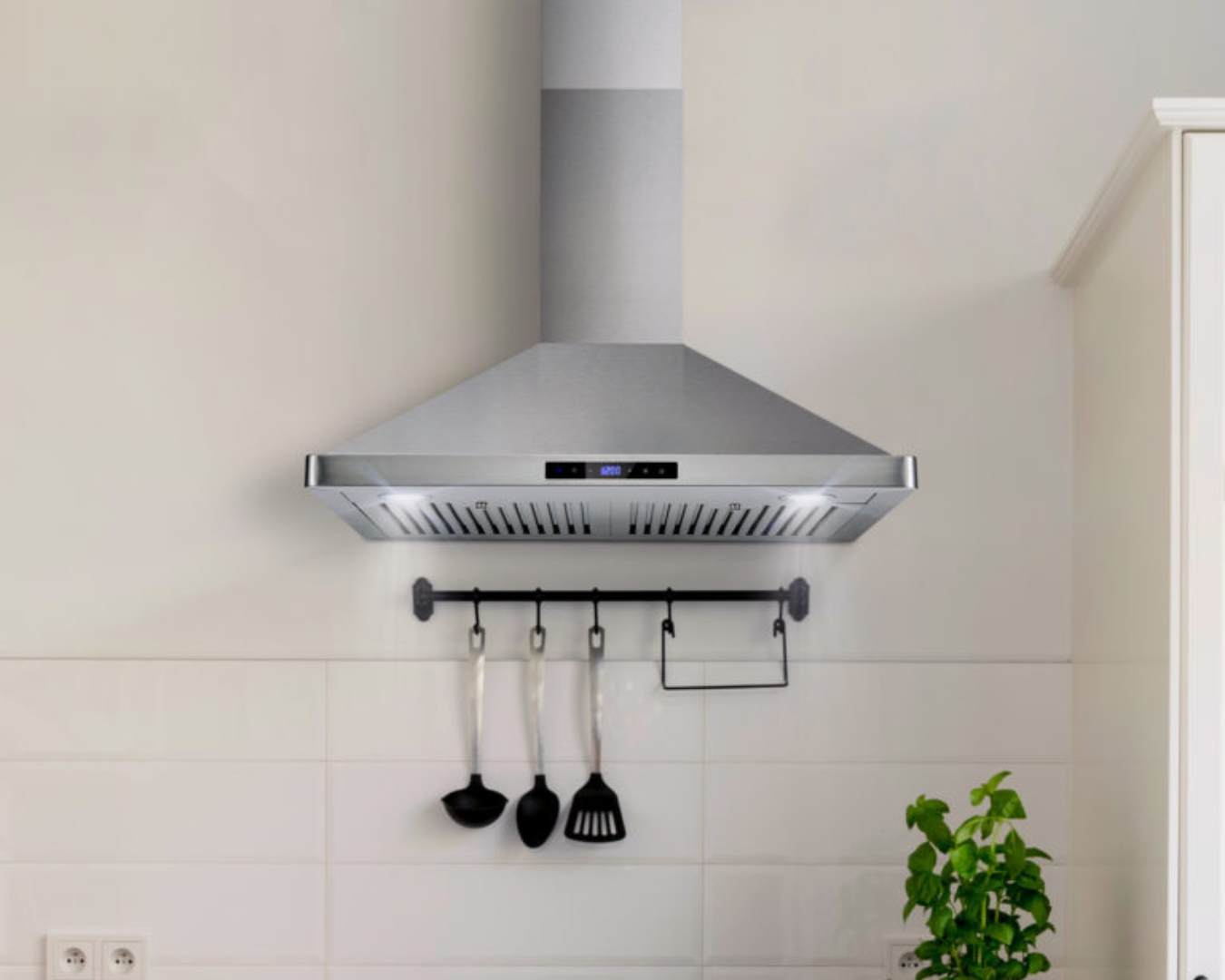Ducted vs. Ductless Range Hoods: Which Is Right for Your Kitchen?
When it comes to maintaining a clean, odor-free kitchen, a range hood is an essential appliance. It helps to remove smoke, grease, and odors produced during cooking. But with the variety of options available, choosing the right type of range hood can be overwhelming. The two primary types are ducted and ductless range hoods, each with its own set of advantages and considerations. This guide will help you decide which is the best fit for your kitchen.
A range hood, also known as an exhaust hood, plays a crucial role in kitchen ventilation. It improves air quality by extracting or filtering airborne particles. Understanding the differences between ducted and ductless range hoods will help you make an informed decision based on your kitchen’s layout, your cooking habits, and your specific needs.
Ducted Range Hoods
How They Work
Ducted range hoods, also known as vented range hoods, are connected to ductwork that leads outside your home. They suck up air, smoke, and cooking odors, expelling them through a vent.
Pros
- Superior Ventilation: Ducted hoods provide the best ventilation, effectively removing heat, moisture, smoke, and odors from the kitchen.
- Efficiency: They tend to be more efficient in maintaining air quality, especially in kitchens where heavy cooking occurs frequently.
- No Recirculation: Since air is expelled outside, there’s no need for filters to be cleaned or replaced frequently.
Cons
- Installation Complexity: Installing ducted range hoods requires existing ductwork or new ductwork to be installed, which can be complex and costly.
- Location Constraints: They can only be installed where there’s access to an exterior wall or ceiling to vent the air outside.
- Permanent Setup: Once installed, they are not easily moved or adjusted.
Ideal For
- Homeowners who cook frequently and produce a lot of smoke or odors.
- Kitchens with access to exterior walls or ceilings.
- Those looking for the most effective ventilation solution.
Ductless Range Hoods
How They Work
Ductless range hoods, also known as recirculating range hoods, filter the air and then recirculate it back into the kitchen. They use charcoal or carbon filters to capture smoke and odors.
Pros
- Flexible Installation: Ductless hoods are easier and cheaper to install since they don’t require ductwork. They can be placed almost anywhere in the kitchen.
- Versatility: They are suitable for any kitchen layout and can be installed in apartments or buildings where adding ductwork isn’t feasible.
- Portability: They can be relocated or adjusted more easily than ducted systems.
Cons
- Less Effective: They are generally less effective at removing heat, smoke, and moisture compared to ducted hoods.
- Maintenance: The filters need regular cleaning or replacement to maintain performance, which adds to the ongoing maintenance.
- Air Recirculation: Since they recirculate air back into the kitchen, they may not completely eliminate all odors and particulates.
Ideal For
- Kitchens without access to an exterior wall or ceiling for venting.
- Renters or those in apartments where installing ductwork is not an option.
- Homeowners looking for a simpler, less permanent installation.
Choosing between a ducted and ductless range hood depends on various factors including your kitchen layout, cooking habits, and budget. If you prioritize the most effective ventilation and have the capability to install ductwork, a ducted range hood is likely the best option. However, if you need flexibility and easier installation, a ductless range hood might be more suitable.
Regardless of your choice, a range hood will significantly improve your kitchen environment, making it a more pleasant and healthier place to cook. Evaluate your specific needs and constraints to make the best decision for your home.

